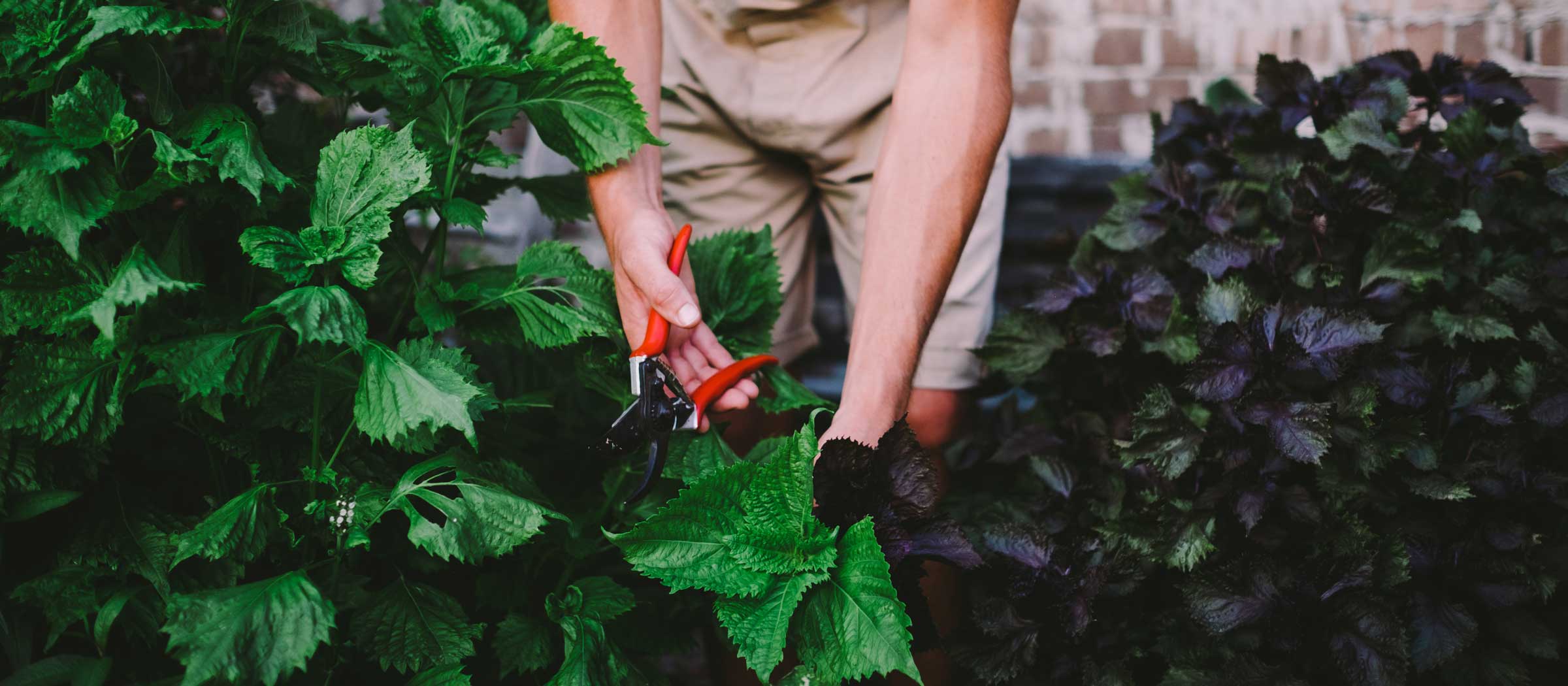Phillip Johnson’s Living Landscapes

- Words by
- Georgina Reid
- Images by
- Claire Takacs
I don’t think I’ve ever met anyone as enthusiastic about drains as landscape designer Phillip Johnson. He genuinely loves them. The excitement in his voice leaps down the phone line as he tells me about the drain in his home garden and how the water it’s collecting is feeding a billabong which, in turn, is creating habitat for frogs, fish, water plants, and thousands of micro-organisms.

Phillip is a man on a mission to reconnect people to nature and re-create natural ecosystems. He’s been designing gardens for around 20 years and has developed a reputation as a pioneer of sustainable design and an advocate for habitat creation and protection. And then there’s water. Philip LOVES water.
“I get really excited by water,” he tells me. “Every property I go to, I immediately do a SWAT analysis of every downpipe, finding out what happens when the rain falls, checking the altitude, slope, water flow, water storage etcetera.” Many of his clients are already on board with his water ideals but if not, they soon are.
I like to educate our clients about how precious water is, and how clever we can be with it,” he says.
Phillip is very smart with water indeed. His home garden in Olinda, in the Dandenong Ranges north east of Melbourne, has a series of billabongs designed to catch and clean all the water falling on and flowing through his property. The runoff from his driveway flows down a series of waterfalls into a billabong at the bottom of his property. “The sound created when it rains is so beautiful,” he says.
“We’ve got another billabong up the top which we regulate by transferring certain downpipes at certain times of the year to replenish it,” Philip tells me. “It’s not linked to driveway runoff because that’s a highly nutrient-rich water, which could potentially throw the whole system out.” This top billabong is also used as a natural swimming pool in the warmer months. It’s more about habitat than hedonism, though. “I want to create habitat to support biodiversity. This is really important to me,” he says.
It’s incredibly refreshing to talk with Philip about his approach to garden making. It’s so easy to design gardens based purely on aesthetics and functionality and not consider biodiversity and habitat creation. Philip sees the whole picture, and is able to communicate it with such vigour that it’s impossible not to get on board.
My ultimate goal is for my clients to call me and tell me the frogs have arrived,” he says. “I want to create outcomes where we bring certain species back into urban environments.”
As our conversation meanders on, it becomes clear we share similar ideas about a bunch of things. Native plants, for example. In 2013 Phillip designed a show garden at Chelsea Flower Show in London. It won the Best in Show award, a first for an Australian garden at Chelsea. The garden was unmistakably Australian – a billabong surrounded by tree ferns, wildflowers stone boulders, and a rusted steel pod. Nearly all the plants were Australian natives, and Phillip tells me how the judges were impressed by the diversity and beauty of the plants. But here in Australia, still, it seems we don’t share the same enthusiasm for our native flora. “It makes me really upset that we don’t utilise the diversity of our native plants,” Philip says. “It’s such an amazing resource we’ve got – all these plants that can grow on next to no water, attract birds and insects, and are incredibly beautiful. It’s beyond belief.”

People like Phillip always have grand visions up their sleeve. I ask Phillip about his. Like me, he’s got a few, and we certainly have one in common. Connection.
Getting people connected – that’s what’s important. If we can become more connected to nature in our urban environment, maybe in housing estates out of Sydney or Melbourne, we can learn, we can respond, we can heal this planet one garden at a time,” he tells me.
When it comes down to it, we’re not owners but custodians of the land. We can delude ourselves into thinking otherwise, but one day we’ll all be gone and others will take our place. Caring and nurturing our little patches of green – whether they’re rooftops, balconies, farms, or suburban backyards can and does contribute to the wellbeing of thousands of lives both now and in the future.
This is why we need people like Phillip Johnson – people who remind us to think of the bigger and smaller picture. People who inspire us to do the best we can for ourselves and the world around us. People who connect us to the beauty and awe of all forms of life – from frogs to tree ferns.
It’s raining in Olinda, and the frogs are happy. “If you walk around my garden now,” Phillip tells me down the phone, “you’ll see all these frogs getting really excited.”
If I were a frog, I know where I’d want to live. In Phillip Johnson’s garden.
–
Phillip Johnson is the principal designer and director of Phillip Johnson Landscapes. He works with a team of 15 landscape architects, horticulturalists and landscapers to design and build private and public gardens Australia wide. His first book Connected: The Sustainable Landscapes of Phillip Johnson was published by Murdoch Books in 2014.











